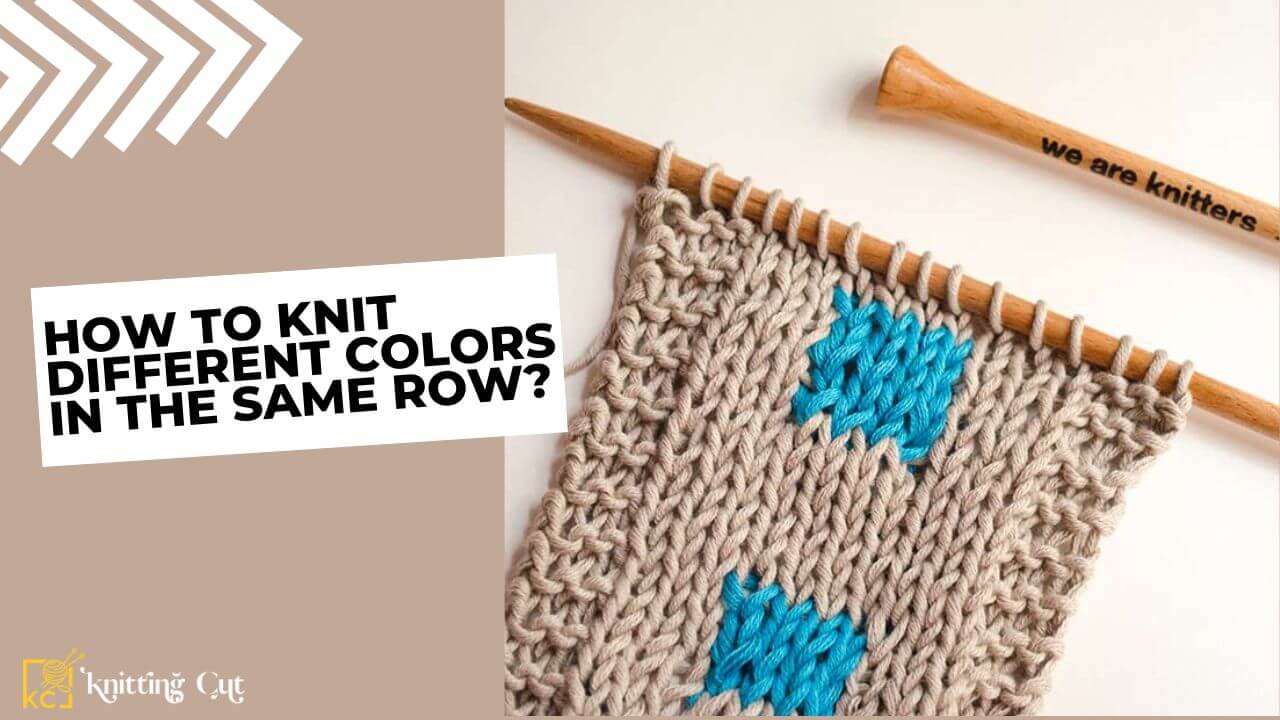Exploring the vibrant world of knitting, knit different colors in the same row, reveals an intricate avenue for creative expression within this craft. This captivating method, often known as colorwork or color knitting, grants knitting enthusiasts the ability to infuse their fabric creations with a rich array of lively patterns and captivating designs. Despite its initial complexity, seamlessly integrating various colors within a row encompasses a range of methods, each with its unique allure and technique.
When you knit, using different colors in one row can make your project look really cool! You can make bold stripes, and pretty patterns, or mix colors together smoothly. This makes your knitting stand out and gives it a special and unique style.
Understanding Yarn Color Dynamics
The significance of colors in knitting goes beyond aesthetics. It involves understanding how different shades complement each other, creating contrasts, and infusing character into your creations.
Importance of Changing Yarns and Colors
The importance of changing the yarn and colors rests in their ability to elevate the appeal, functionality, and adaptability of various products. To incorporate different colors while knitting in the same row, alternate between yarns at the beginning of the row, seamlessly blending hues to create captivating and diverse patterns.
Also Read: How To Make Chunky Knit Blanket
Materials You’ll Need
To begin knitting with different colors in the same row, gather the following materials:
- Yarn in multiple colors
- Knitting needles (appropriate size for your yarn)
- Scissors
- Yarn needle
Methods for Changing Colors in Knitting
Mastering the art of changing yarn colors involves several techniques. One such method is alternating colors within the same row, commonly used in intricate patterns like a fair isle.
- Striping: This involves knitting rows or rounds in one color, then switching to another color for the next rows or rounds, creating stripes in the fabric.
- Intarsia: This technique is used for creating blocks of different colors within the same row or round. Yarn is joined or twisted at the color change points to create separate areas of color.
- Stranded Knitting: In this method, two or more colors are used in the same row or round, carrying the unused yarn across the back of the work. Typically, no more than two or three stitches of a color are worked before switching to the next color.
- Duplicate Stitch: This method involves embroidering a new color over the existing knitted fabric to add detail or change colors without knitting with multiple strands at once.
- Slip Stitch Colorwork: This technique uses slipped stitches to create patterns or color changes without requiring knitting with multiple yarns in the same row.
How to Change Color in Knitting Within the Same Row
Changing colors within a row involves strategic maneuvers to maintain a smooth transition. Here’s a step-by-step guide:
- Preparing for the Color Change Before starting the new color, knit as many rows as desired in the first color. For a neat change, begin the new color at the start of a right-side row, especially in Garter or Stockinette stitches.
- Switching to the Second Color When ready to introduce the second color, drop the first color and start with the new one. Leave a yarn tail of about six inches for easy securing later.
- Beginning with the New Color Insert the needle into the first stitch with the new color, ensuring to leave a tail. The initial stitch might look loose, but that’s normal. Adjust it later for a neater appearance.
- Knitting Across the Row Continue knitting in the new color until you wish to switch again. The process remains the same regardless of the number of colors used.
- Managing Yarn Along the Edges For short stripes using the same color, carry the unused yarn up the side, giving the yarn a single twist at the edge every other row to prevent looseness.
- Maintaining Smooth Edges Ensure to gently pull the carried yarn taut along the edge to keep it wrapped in the rows’ ends for smooth edges.
- Returning to Carried Yarn To switch back to the carried yarn, drop the current color and pick up the carried one. Knit the first stitch as before for a clean transition.
- Finishing Off After completing all desired color changes, weave in the loose ends using a darning needle. A few stitches in different directions should secure the yarn. Trim any excess yarn with scissors.
- Considerations The back of the work might display lines from color changes. Starting new colors on the right side usually hides these lines. You can even incorporate them as part of your design if preferred.
Conclusion
Mastering the skill of changing yarn colors in knitting opens up a world of creative possibilities. Whether it’s introducing stripes, intricate fair isle patterns, or random color changes, understanding these techniques allows knitters to elevate their craft.
Also Read: How To Knit With Pom Pom Wool?
